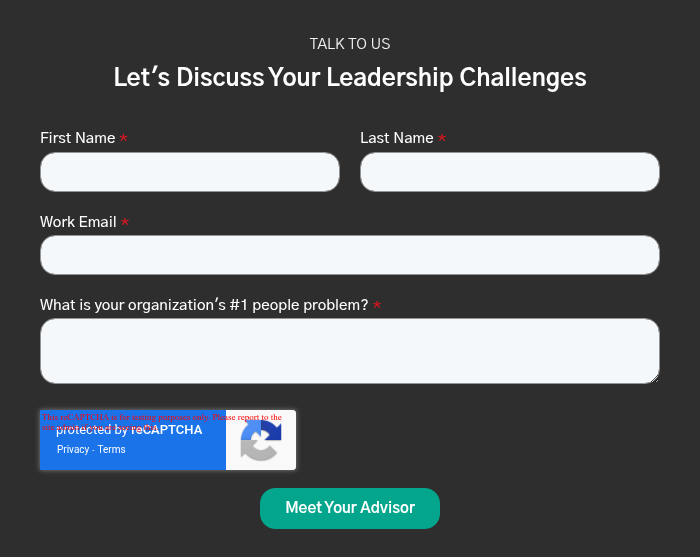
High-growth companies often reach a point where the founder, typically a Visionary leader, can no longer manage both strategic direction and day-to-day execution. The entrepreneurial fire that ignites innovation can, over time, smother operations under the weight of fragmented attention. The solution appears obvious: hire an Integrator.
In theory, the Integrator steps in to manage the business, allowing the Visionary to focus on expansion, creativity, and personal renewal. In practice, however, this transition often fails. Despite alignment in values and intentions, approximately 30 percent of Visionary–Integrator relationships do not survive the first year.
This article explores the structural and behavioral dynamics behind those failures, and more importantly, how to increase the probability of long-term success.
In this article, you will learn:
- The Visionary–Integrator Dynamic
- The Post-Hire Vision and the Reality
- Why Integrators Fail: The Two Root Causes
- How to Set the Relationship Up for Success
- A Proven Framework for First-Year Success
The Visionary–Integrator Dynamic
A Visionary is a founder or CEO who is the engine of growth. They see patterns others miss, generate bold ideas, and are willing to take risks most avoid. However, Visionaries often struggle with follow-through. They can inadvertently create chaos by initiating too many projects, constantly shifting priorities, or failing to build sustainable systems.
The Integrator is the counterbalance: grounded in execution, operations, and organizational clarity. They turn strategy into action, manage the Leadership Team, and build accountability. In an EOS® (Entrepreneurial Operating System) structure, they are the glue holding everything together. The Integrator owns the business plan, scorecard, and cross-functional alignment.
When properly paired, a Visionary and an Integrator form a dual-leadership model capable of scaling both the business and its leadership capacity.
The Post-Integrator Hire Vision and the Visionary's Reality
When a Visionary hires an Integrator, the expectations are often utopian. With operational responsibilities transferred, the Visionary imagines:
- Time for extended vacations
- Freedom to explore hobbies or philanthropic interests
- Room to pursue new business ideas
- A company that thrives without their daily input
- A high-performing and happy Leadership Team
- A more balanced family life
But those visions quickly fade when the Integrator cannot gain traction. Instead of progress, friction emerges. The Integrator grows frustrated. The Leadership Team hesitates. Within months, what was once a strategic hire turns into another turnover.
Why does this happen so often, even with the right talent?

Why Integrators Fail: The Two Root Causes
1. The Leadership Team Does Not Support the Integrator
When an Integrator enters the organization, the Leadership Team often continues looking to the Visionary for direction. This undermines the Integrator’s authority before it is established. Even subtle signals, such as the Visionary providing feedback or issuing directives, send the message that the Integrator is not fully in charge.
This lack of internal alignment is often unintentional but deeply damaging. Without explicit buy-in, the Leadership Team remains loyal to the old hierarchy. The Integrator, despite their authority on paper, finds their decisions quietly resisted or second-guessed.
2. The Visionary Undermines the Integrator Through Micromanagement
Even more corrosive is the behavior of Visionaries who struggle to let go. Many founders, after years of directing every aspect of the business, find it difficult to step back. They attend meetings they should skip, interject themselves into performance reviews, or override Integrator decisions with informal end-arounds, quietly steering outcomes behind the scenes.
This isn’t necessarily because the Visionary wants to fail, doesn’t know how to let go, or doesn’t trust the Integrator, although some of those reasons may be sprinkled into the mix. Most frequently, it’s because The Visionary doesn’t know what they SHOULD be doing! They have always done these Integrator tasks, and even though they don’t enjoy them, they lack the clarity of where they can add the most value to the organization.
No matter how subtle, this behavior signals the Integrator lacks full control. The result is predictable: the Integrator grows demoralized, the Leadership Team gets confused, and the Visionary–Integrator partnership unravels.
How to Set the Visionary-Integrator Relationship Up for Success
1. Build Support from the Leadership Team
Success begins before the Integrator is hired. The most effective approach is to create shared accountability using scorecards. Involving the Leadership Team in building the scorecards for both the Visionary and the Integrator fosters ownership and clarity.
When the team defines what the Visionary will no longer own, and what the Integrator will now lead, support follows. It becomes a shared transition, not just a change in reporting structure. For organizations that run on EOS, once the Integrator is hired, this approach takes The Same Page Meetings to a new level.
Additionally, communication channels must shift. All leadership communication should flow through the Integrator, both to and from the Visionary. This reinforces their authority, ensures consistency, and prevents end-arounds
2. Establish Structural Boundaries and Accountability
Visionaries must be honest with themselves. If they are not ready to release control of operations, they should not hire an Integrator. Red flags include:
- A desire to attend weekly Level 10 meetings
- Hesitation to grant full P&L authority
- Involvement in the performance management of Leadership Team members
If these instincts persist, the Integrator's role becomes performative, not functional, much like a substitute teacher.
A clear division of responsibilities, supported by well-defined scorecards for both roles, is essential. These scorecards should be reviewed regularly in three settings:
- Weekly Same Page Meetings: To resolve conflicts, discuss priorities, and maintain alignment
- Monthly Accountability Coaching Touchpoints: An external coach can offer neutral observations and reinforce commitments
- Quarterly Performance Reviews: Facilitated by a performance coach to ensure each leader is measured by their respective responsibilities, and nothing more
These cadences do not just support the Integrator. They discipline the Visionary. They act as checkpoints to avoid overreach and maintain role clarity.
Additional best practices include:
- Publishing a decision-rights matrix
- Conducting anonymous Leadership Team feedback surveys, or conduct Start, Stop, Continue exercises
- Creating a shared document with stop-start-continue behaviors for both roles
One of our favorite client successes was that of an Owner/Visionary of a large and successful micro-brewery. He knew he wanted to expand, he knew he didn’t want to go it alone, and knew where his unique abilities were and were not. Once he and his team went through The Metiss Group’s Visionary-Integrator Catalyst process, the two were off to the races. In less than a year, as trust grew between them, they leveraged the dynamic nature of updating their respective Job Scorecards to ensure nothing slipped between the cracks as they broke ground and eventually opened the doors to another wildly successful location without any hiccups within their control. Look out for the next two grand openings!
A Proven Framework for First-Year Visionary-Integrator Success
While scorecards and meeting cadences are powerful tools, execution often falters without structured guidance. That is why The Metiss Group created the Visionary–Integrator Catalyst™ as part of its The Leadership Academy™.
This program goes beyond hiring. It equips the Visionary, the Integrator, and the Leadership Team with the tools, agreements, and feedback loops required to make the first year successful. Using a trademarked process, The Metiss Group has helped dozens of founders secure not just the right Integrator, but also a sustainable operating rhythm for the partnership.
Whether through leadership training programs, executive coaching, or organizational design consulting, The Metiss Group ensures that Integrators are not only found, but set up to thrive.
Another client used this process to hire his first Integrator. After 8 years of the Visionary living the “EOS Life,” the Integrator chose to retire. After the first success, the Visionary called The Metiss Group again – don’t mess with success, he said – let’s do it again!
Final Thoughts
The Visionary–Integrator relationship is one of the most strategic in any growth-focused company. Done well, it enables scale, resilience, and freedom. Done poorly, it drains momentum and morale. Success is not a function of hiring alone. It depends on structure, discipline, and trust.
With the right frameworks and the right partner, those dreams of vacations and thriving teams can become more than just visions. They become results.
